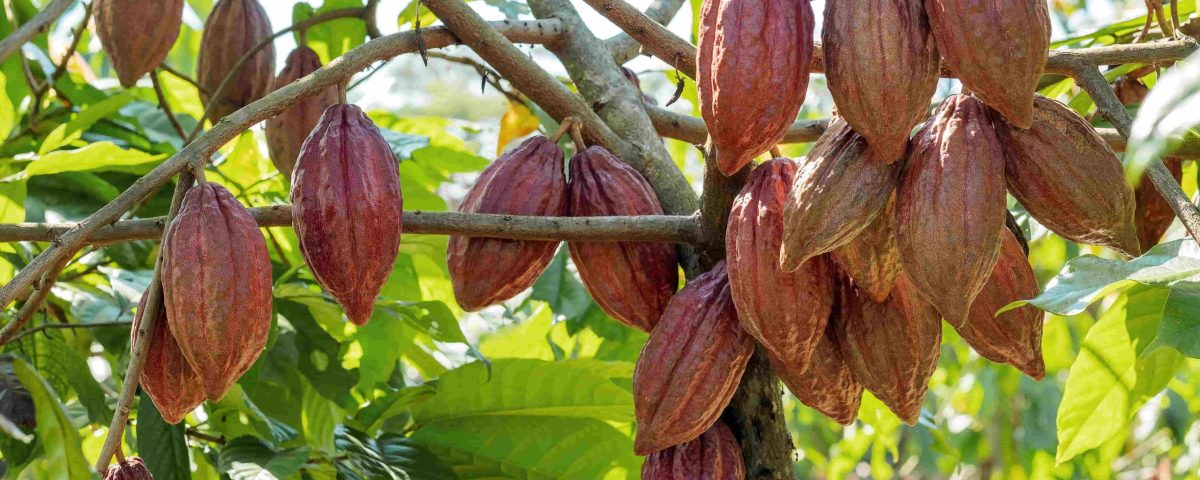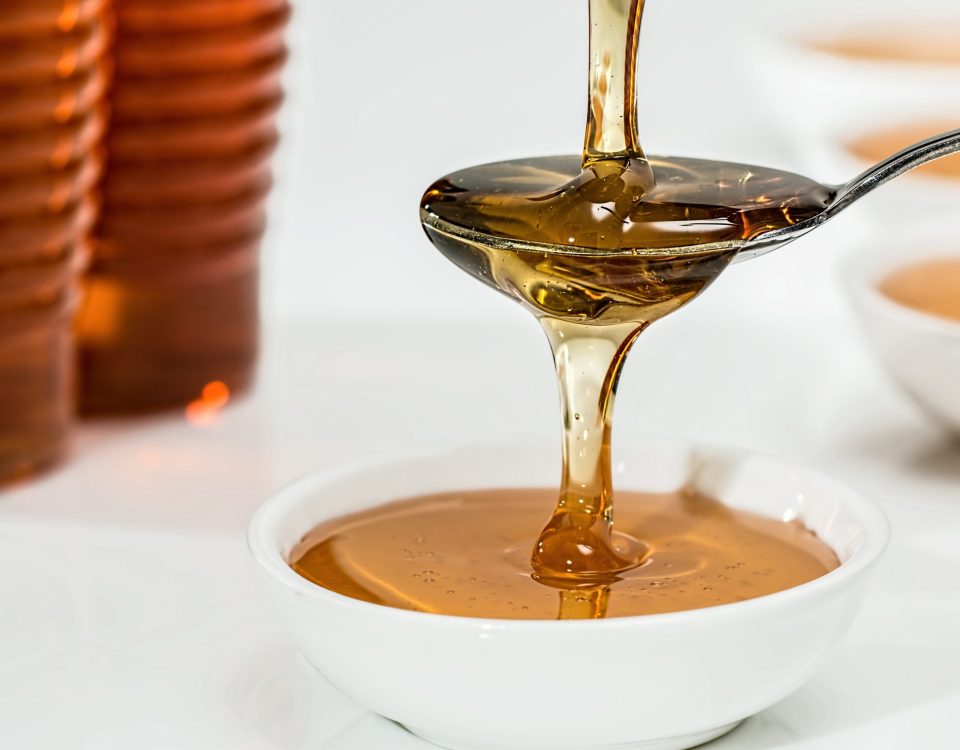
Cacao Price Volatility
June 24, 2024
Agave Syrup in Cooking and Mixology
August 5, 2024Challenges with climate change and efforts to regenerate Amazon forest while producing cacao with sustainable farming techniques. Narrated by our CEO Paolo Grossi in his latest trip to Peru.
Peru, September 2023. After a couple of days getting over the jetlag while tasting some wonderful food in the neighborhood of Barranco and Chorrillos in Lima, I took a local flight to Tarapoto in the Amazon region near the Pacaya Samiria National Reserve. Upon arrival I then took a 4-hour drive up winding wet roads, heading to Alejandro and Ernestina’s cacao plantation. I put on my rubber boots and walked through a slippery path where Alejandro welcomed me in the middle of a constant but soft rain.

A big smile and a warm hug, then had a walk around the cacao plantation while talking about the latest harvest. The plantation is amazing and although the main harvest had already passed, many cacao pods were still visible.
Maintaining the plantation requires pruning of the cacao trees and also the “sombra” or shade from taller trees which protect the cacao trees from direct excruciating sun when they are very young. The shade is necessary to make a microclimate and allow the cacao trees to mature. It is tricky as if too much sun can burn the young cacao, but too much shade can translate into excessive moisture and blocked airflow, promoting unwanted fungal infections that damage the cacao. Its quite an art that needs much experience.
Appropriate pruning and good nutrients in the soil translate into healthy and productive cacao trees. Incorporation of other crops such as bananas and pineapples mean that the growers can benefit from harvesting and making some income while waiting for the cacao trees to become fully productive, which can be a good 3-4 year wait.

The Cacao Tree is part of a wonderful ecosystem. It requires the shade of typically large native trees and in turn keeps the soil humid and rich in nutrients. It is a perfect balance between the amount of sun that the large trees offer (shade) and the contribution of the smaller cacao trees to maintain a healthy soil.

The cacao beans are extracted from the inside of the Cacao fruit (pod) which contains both the beans (seeds) and a white sweet pulp. The beans are separated from the pulp and left to ferment for 3-5 days in wooden containers. After fermentation, the beans are sun dried. When the beans are dried and have reached a perfect flavour state they are ready to be shelled (husked).
There was no fermentation going on at the time of my visit but I took a picture never the less to show you the type of wooden container where this process takes place:


In Peru, cacao beans are harvested twice a year. In summer from September to December and in winter from January to May. Each hectare (10,000 square meters) normally produces between 250 to 750 kg of cacao beans every year. An exceptionally good crop can reach 1000 kg per hectare.


The traceability process of our organic cacao products is achieved by communication between international organic certification agencies. In our case, ACO (Australian Certified Organic) will have a record of all lots that we sell and all the steps until the product reaches the end consumer.
In addition to the organic certification control, strict quality controls include inspection by splitting the beans and taking random samples from the harvest in order to evaluate each lot that could possibly be rejected if the minimum standards are not met. This is how the guillotine looks after splitting the fermented bean for initial inspection to confirm adequate fermentation and bean quality:

A sad reality is that the Amazon rainforest trees is severely affected by illegal logging, mining and cattle farms. On my way to the more remote areas, I was very upset to see many trucks filled with logs and timber on the rural roads some of them might be legal but then it would be hard confirm this. I can imagine how difficult would be to control such large extensions of rainforest.
A poor family will be very tempted of selling illegal timber when family income becomes a matter of survival. Sustainable commercial preservation needs to encourage small family growers to produce with real economic benefits while preserving the forest trees.
Sustainable cacao farming hopes to achieve this. Cacao agriculture coexists with the native forest and contributes to a biodiverse environment. Apart from organic and regenerative agriculture, additional incentives for local farmers is to incorporate Eco-Tourism into the equation.
I thanked Alejandro and Ernestina and headed back to Tarapoto and then take another local flight to Huánuco the next day. Next stop was to visit Luis Reyes who has been applying agroforestry techniques in his family´s 50 year old farm in near the Cordillera Azul in the Tingo María area. Luis’s grandfather started with the farm cultivating tobacco, then cacao which was later cleared out to make way for sugar cane. In recent years and under his leadership, Luis went back to cultivating cacao but this time using regenerative farming techniques.
I was so impressed and very happy to see this. Very successful results are now a reality and now neighbor plantations are curious and want to know how Luis has been able to reincorporate tall forest trees in combination with bananas, cacao, avocado, and profitable organic produce to make a living while rescuing the natural habitat. An incredible achievement that made my day.

Please read or blog article Regenerative Farming – A viable solution to Climate Change which explains how diversity of crops reduces the risk and proves more effective than a very large area of land with a single type of crop. Regenerative agriculture increases the nutrimental value and the overall yield of a field, while improving carbon absorption by the soil and creating a thriving ecosystem that is powered by the microorganisms living in it.
After a long walk in the plantation I congratulated Luis for his results. We talked for a long time and we couldn’t help to feed on each other´s enthusiasm. He talked about his next project which is to start an eco-tourism project building some log cabins within the plantation. Amazing.
I had some more visits to make in the next few days and was very tired but had a smile on my face on my way back to the town.
Keeping a good relationship with our growers and understanding where our cacao comes from is a key link to supplying our customers with the product they expect. In order for the end consumer to purchase a bar of organic cacao from us, many challenges have to be overcome. Cacao beans come from different and inaccessible locations where transport in some cases needs to be completed through canoes and foot paths along the Amazon rainforest.
Global warming has added difficulty to this process. 2024 was marked by severe rains and floods that has complicated the collection of beans from the more remote areas, as well as causing damaged to some crops. This resulted in an inevitable increase of cacao derivatives worldwide.
Back in Australia, we continue withy our effort keeping our supply running smoothly and making sure you have your Maretai products when you need them.
I hope this article is illustrative and helps you understand the origin of our cacao, and show Maretai’s commitment to a fair and healthy supply chain that promotes favorable living conditions to the families in the cacao plantations while putting a small grain of sand in the hope to recover the balance of our much loved planet.
Warm regards,
Paolo Grossi


